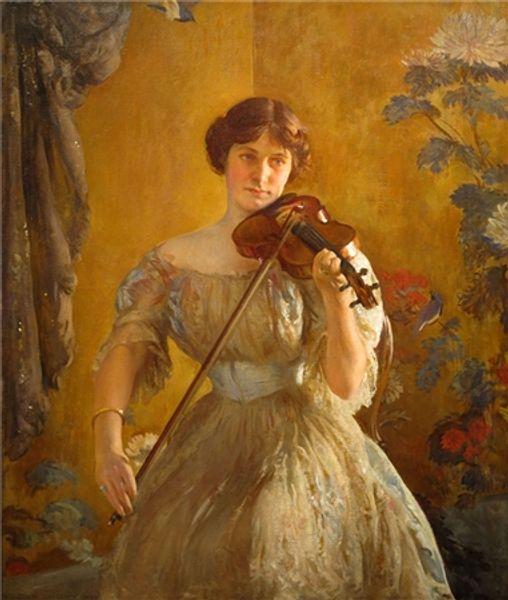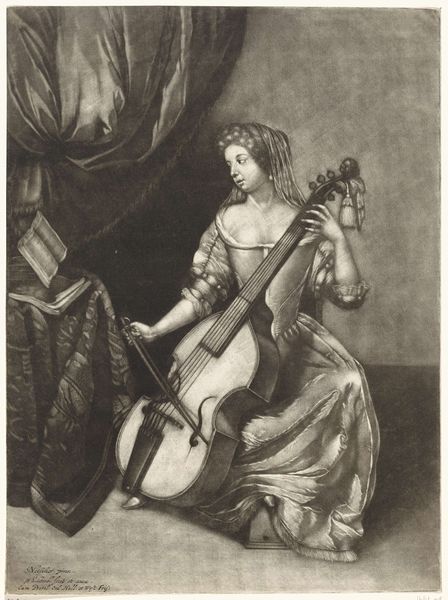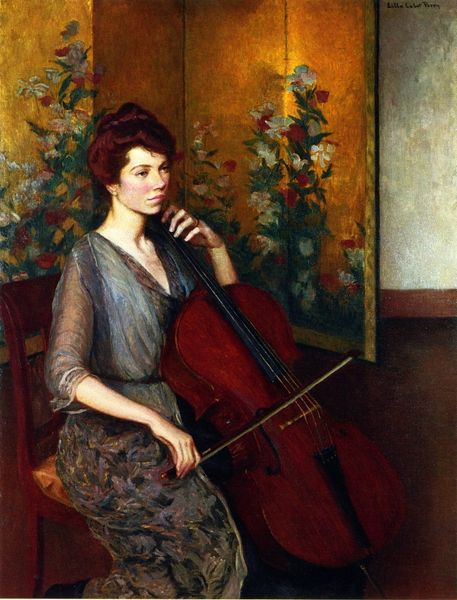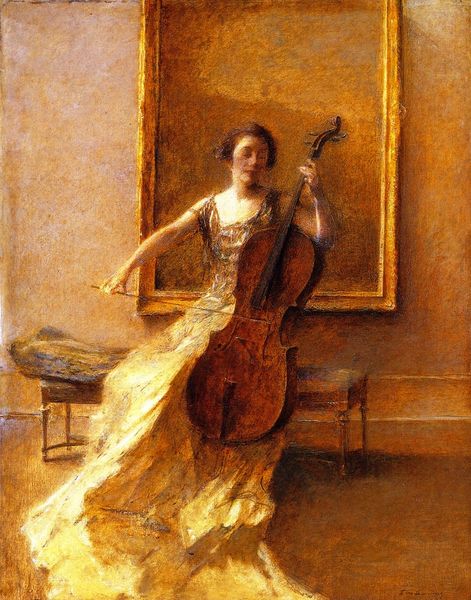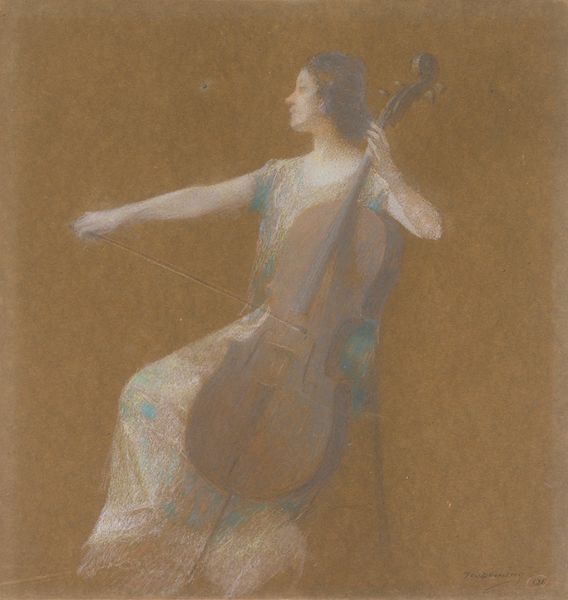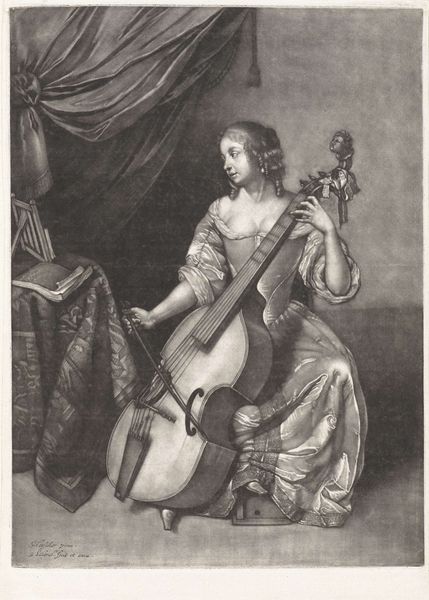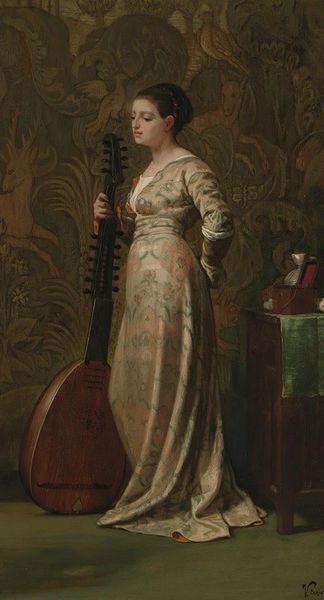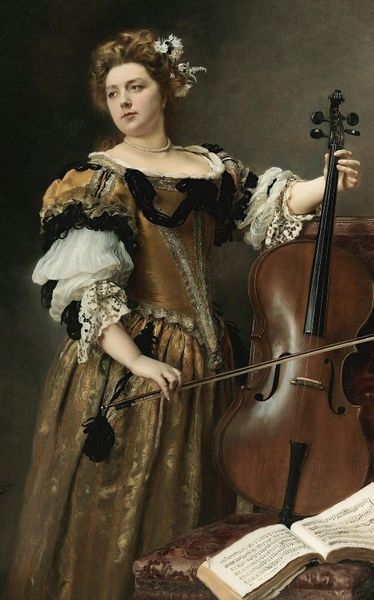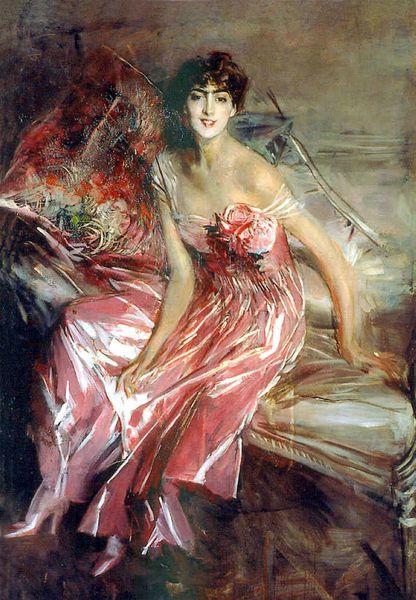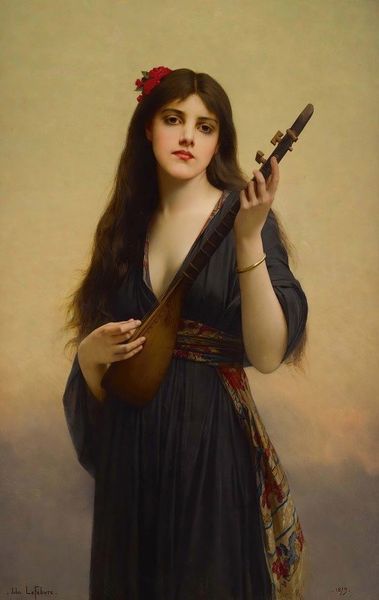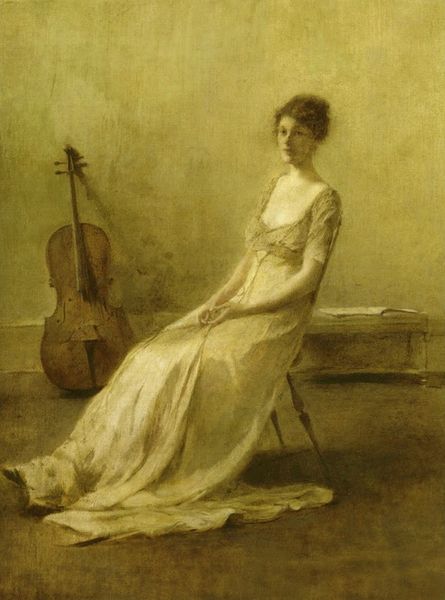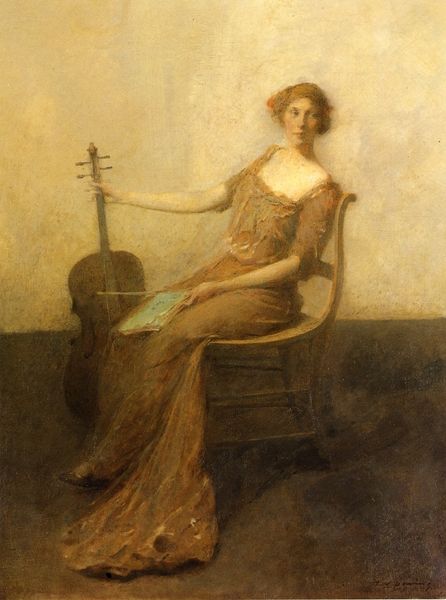
Copyright: Public domain US
Curator: Here we have Augustus John’s 1923 portrait of the celebrated Portuguese cellist, Guilhermina Suggia, known as "Madame Suggia." Editor: It strikes me immediately as so theatrically composed. The vibrant reds against the shadowed background create a compelling tension, almost like she's emerging from the depths of the stage. Curator: It is interesting to think about how Suggia was a celebrated female performer in a world still dominated by male instrumentalists, challenging those cultural expectations in her time. John, known for capturing the bohemian spirit, positions her centrally and powerfully. Consider how the red dress isn’t just an aesthetic choice; it symbolizes passion and defiance. Editor: The interplay between the model, the instrument, and the folds of fabric definitely dictates the dynamic—all those shapes, particularly the curves of the cello against the angular folds of the gown, really create a striking pattern. Also, it's hard to ignore the surface quality: that evident brushwork giving life and texture to every inch. It keeps our attention shifting around the canvas. Curator: Absolutely, John masterfully used color and form to create an emotional landscape. Looking closer, we can see Suggia isn't simply playing; she’s inhabiting the music, becoming one with her instrument. Her gaze, while averted, speaks volumes about her intensity and commitment. Editor: The way the light catches the wood of the cello, and the delicate reflections… you can almost hear the music, feel the vibrations. It's a sensory experience rendered on canvas, but those formal elements make it work. Curator: Indeed. Beyond being a simple likeness, it’s a portrayal of female artistry and strength, a celebration of a woman who made profound contributions to classical music. This portrait situates Suggia within a larger narrative of women asserting their presence and power within artistic domains. Editor: This reminds me of how crucial material presence can be, and that is a beautiful balance John achieves. Curator: It definitely speaks volumes, capturing Suggia’s era and her individual force. Editor: I see how that contextual background shapes my reading of the compositional features and adds nuance to the sensory impression.
Comments
No comments
Be the first to comment and join the conversation on the ultimate creative platform.
